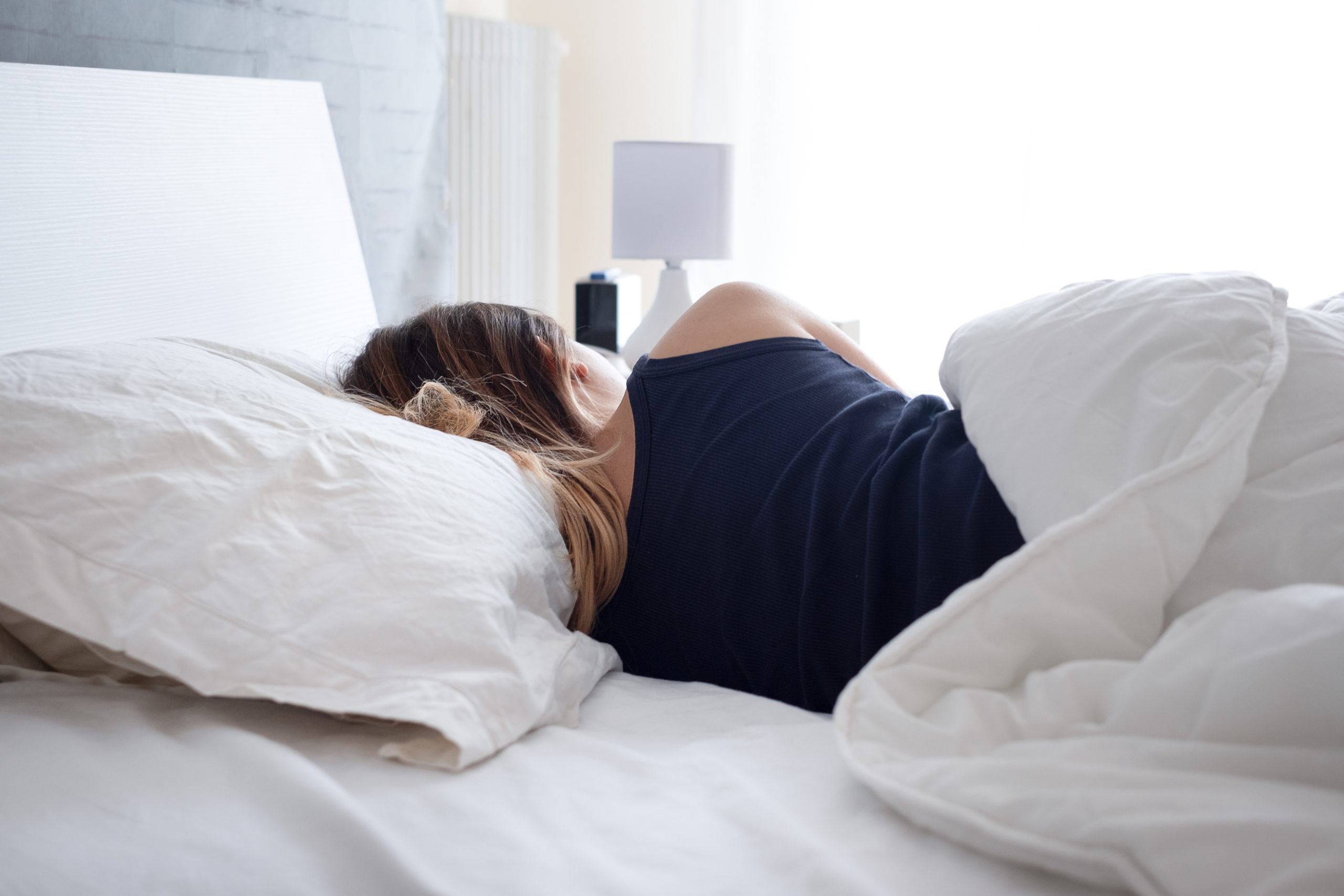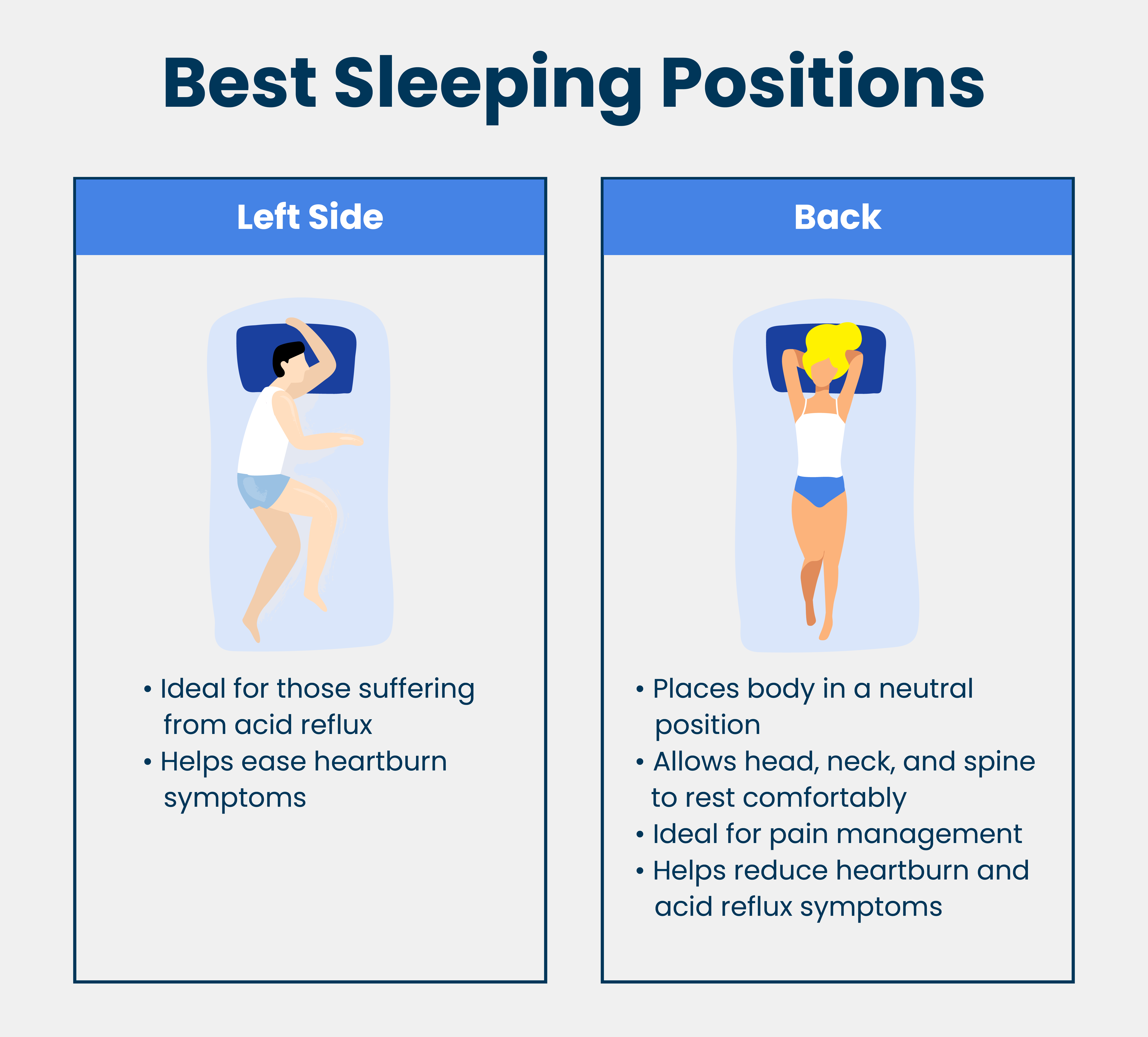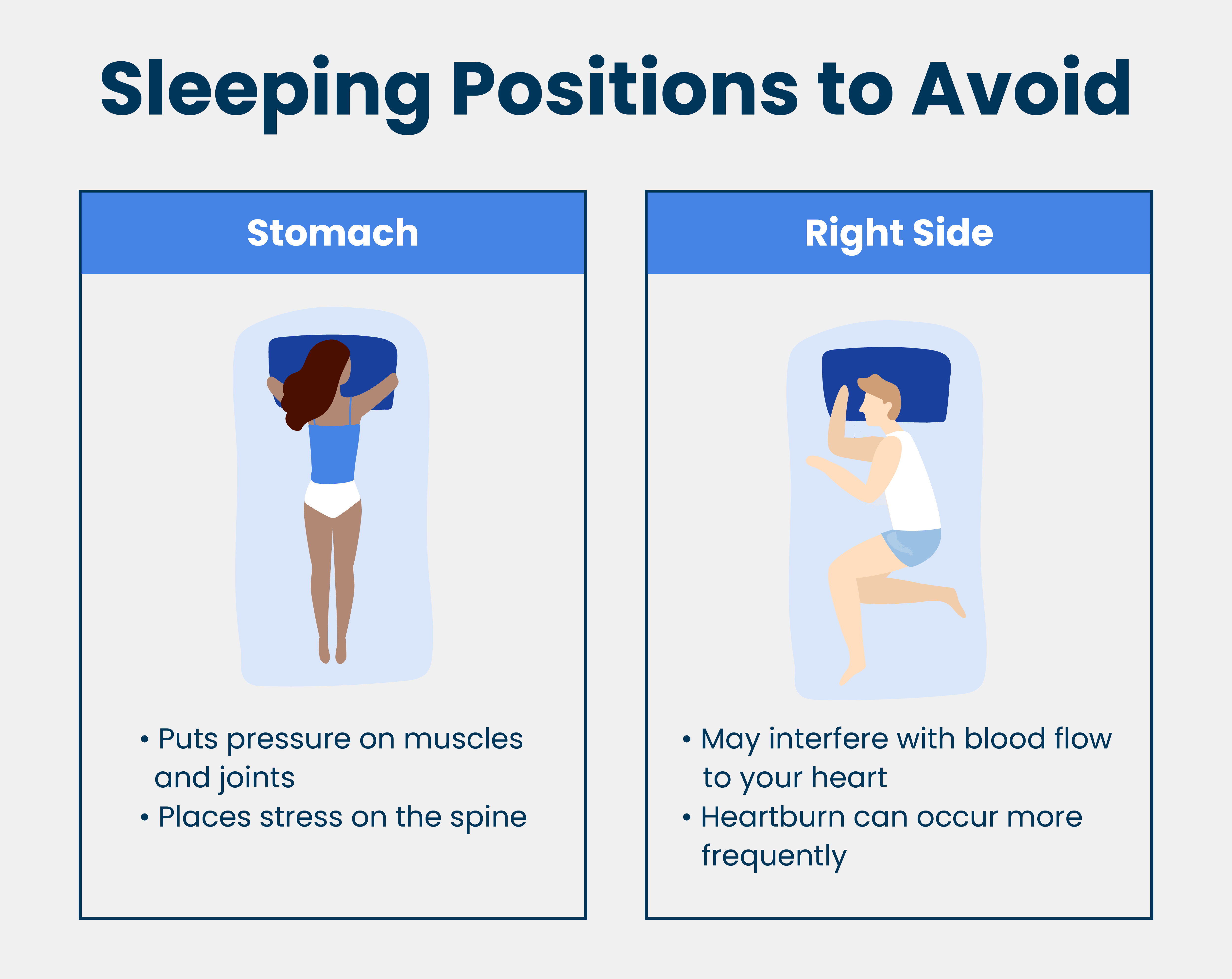Which Side is Best to Sleep On?

What’s the Best Sleeping Position?
Plenty of people have difficulty figuring out the correct way to sleep. Whether it’s due to habits formed in childhood or simply personal preference, some like to sleep on their sides while others like to lie on their backs.
As a matter of fact, research shows that nearly everyone has a different approach when it comes to their preferred sleeping position. Close to 47 percent of Americans sleep in the fetal position, making it the most common sleep position, according to the Better Sleep Council. Meanwhile, 17 percent of Americans like to sleep on their stomach, 13 percent sleep on their sides, with their arms stretched outward, and 11 percent sleep flat on their back.
That’s a lot of variation. A significant amount of research and expert opinions suggest that, for most people (but not all!), sleeping on your back might be the best sleeping position. Yet, at the same time, resting on either one of your sides can be a good sleeping position as well.
If you’re not sure about what may be an ideal sleeping position for you, you’re in the right place. It’s important to remember that, just like sleep itself, there’s no one size fits all “perfect” sleeping position. There is not one sleeping position that’s best for everyone. Instead, we generally recommend sleeping in a position that makes you feel comfortable, and in a position that allows for sufficient support of your back and neck. In this article, we’ll cover what these positions may be for you. So, without further ado, here’s what science has to say when it comes to sleeping positions.

Best Side to Sleep On
“What’s the best sleeping position?” ranks with other common sleeping-related questions, such as “Why do my arms fall asleep at night?” and “What’s causing my insomnia?” There are many reasons why you may be asking yourself what’s the best position to sleep in. Maybe you’re having trouble falling asleep, you’re not sleeping through the night, or you just want to try something new. In any case, remember that there’s no one single “best” sleeping position for everyone, and it’s important to take a personalized approach to your sleeping position and your overall sleep habits!
An ideal sleeping position can make you feel better physically by supporting your spine and keeping your body in alignment. Additionally, if a new sleeping position can help you get to sleep quicker—and stay asleep—then you’ll be able to capitalize on the benefits of a good night’s sleep. Sleep reduces stress, increases mental clarity, boosts your energy levels, and helps you maintain a strong immune system.
Keep in mind that the correct way to sleep may depend on your unique needs. In the following section, we list out the pros and cons of sleeping on each side, so you can discover for yourself what the best position to sleep in is.
Sleeping on Your Back
Despite the back-and-forth debate between the right and left side, research suggests that sleeping on your back may be the best sleeping position for some people. According to UC San Diego Health, back sleeping is an ideal option for those who want a good sleeping position for pain management. Back sleeping allows your body to rest in a neutral position while keeping your head positioned above your chest, both of which are great for minimizing aches and the symptoms of heartburn. However, more research is needed to understand the full scope of back sleeping and whether sleeping on your back is right for everyone.
Additionally, sleeping on your back gives your head, neck, and spine a proper rest throughout the night. And when you sleep facing the ceiling, you can lessen the likelihood of suffering nighttime acid reflux, which can potentially inflict long-term damage on your esophagus. However, it’s important to note that if you suffer from positional sleep apnea, experts recommend avoiding the back sleeping position; in this case, sleeping on your side often serves as a good sleeping position. However, remember to always speak to your doctor if you suspect you may have any sleep disorder.
Pros:
- Places body in a neutral position
- Allows head, neck, and spine to rest comfortably
- Ideal for pain management
- Helps reduce heartburn and acid reflux symptoms
Cons:
- Not ideal if you suffer from sleep apnea

Sleeping on Your Left Side
It turns out that sleeping on your left side can be a good sleeping position if you suffer from heartburn. A study from The Journal of Clinical Gastroenterology found that those who slept on their left side were less likely to suffer heartburn problems. Gastroesophageal reflux disease (GERD) affects many Americans, and can negatively impact the quality of your sleep by contributing to acid reflux and heartburn episodes.
So, if you’re suffering from acid reflux at night and it’s getting in the way of your sleep, consider sleeping on your left side. If you’re looking for additional help when it comes to sleeping with GERD, you can also explore solutions such as an acid reflux pillow, which keeps you in the best sleeping position to minimize acid reflux throughout the night. As always, speak to your doctor first about any potential solutions that may help improve your GERD.
Pros:
- Ideal for those suffering from acid reflux
- Helps ease heartburn symptoms
Cons:
- Potentially places stress on your spine, hips, and/or lower back
Sleeping on Your Right Side
Lying on your right side may not be the best sleeping position, especially for your heart. This is according to sleep specialist W. Christopher Winter, MD, medical director of the Martha Jefferson Hospital Sleep Medicine Center in Charlottesville, Virginia, who spoke with CNN about the pros and cons of side sleeping.
Winter told CNN your blood flows throughout your body and eventually returns to the heart on the right side. But when you sleep on your right side, you place a significant amount of pressure upon the blood vessels responsible for transporting blood to your heart. However, significantly more research is needed to understand whether right side sleepers are at risk for cardiovascular impairment. Conversely, more work is needed to understand whether sleeping on your left side can actually improve the blood flow to your heart while you rest.
Pros:
- May feel comfortable for some people
Cons:
- Interferes with the blood flow to your heart
- Heartburn can occur more frequently

Sleeping on Your Stomach
Stomach sleepers tend to put more pressure on their muscles and joints, which can lead to aches, potential nerve issues, and numbness. Sleeping on your stomach is generally not the best sleeping position because it places stress on your spine, which can exacerbate lower back pain.
Pros:
- May feel comfortable for some people
Cons:
- Puts pressure on muscles and joints
- Places stress on the spine
- Not the most efficient position for your brain to remove waste
Which Side May Be Ideal for Some People
Given the above information, sleeping on your back may be the ideal side to sleep on for some people. Back sleeping allows your body to rest in a neutral position, may help with pain management, and may minimize the likelihood of nighttime acid reflux episodes.
At the same time, sleeping on your left side may offer several benefits for those with GERD. Some studies have shown that this may be a good sleeping position for mitigating acid reflux and heartburn symptoms.
What Side Should You Think Twice About
While you may find it comfortable, sleeping on your stomach is generally not recommended for most people, as it places undue stress on your muscles, joints, and spine, which can lead to aches and pains.
Wrapping Up: Sleeping Positions
For those wondering what the best sleeping position is, the answer is that it depends. Ultimately, it’s hard to pinpoint the best sleeping position. You might try switching out sleeping positions each week and record how you feel each morning—stick with the sleeping position that makes you feel the best mentally and physically. If you can’t find a comfortable sleeping position, it might be one of the signs you need a new mattress.
With that being said, sleeping on your back appears to be ideal for most people, followed by your left side, then your right one. Just try to avoid sleeping on your stomach if you can, as this can put unnecessary pressure on your limbs, joints, and spine.
If you’re looking for a technological aid to help you track the quality of your sleep, look no further than the SleepScore app. With this app, you can track your sleep progress and get a detailed analysis of your sleep quality. This can help you definitively determine the best sleeping position for your needs.
References